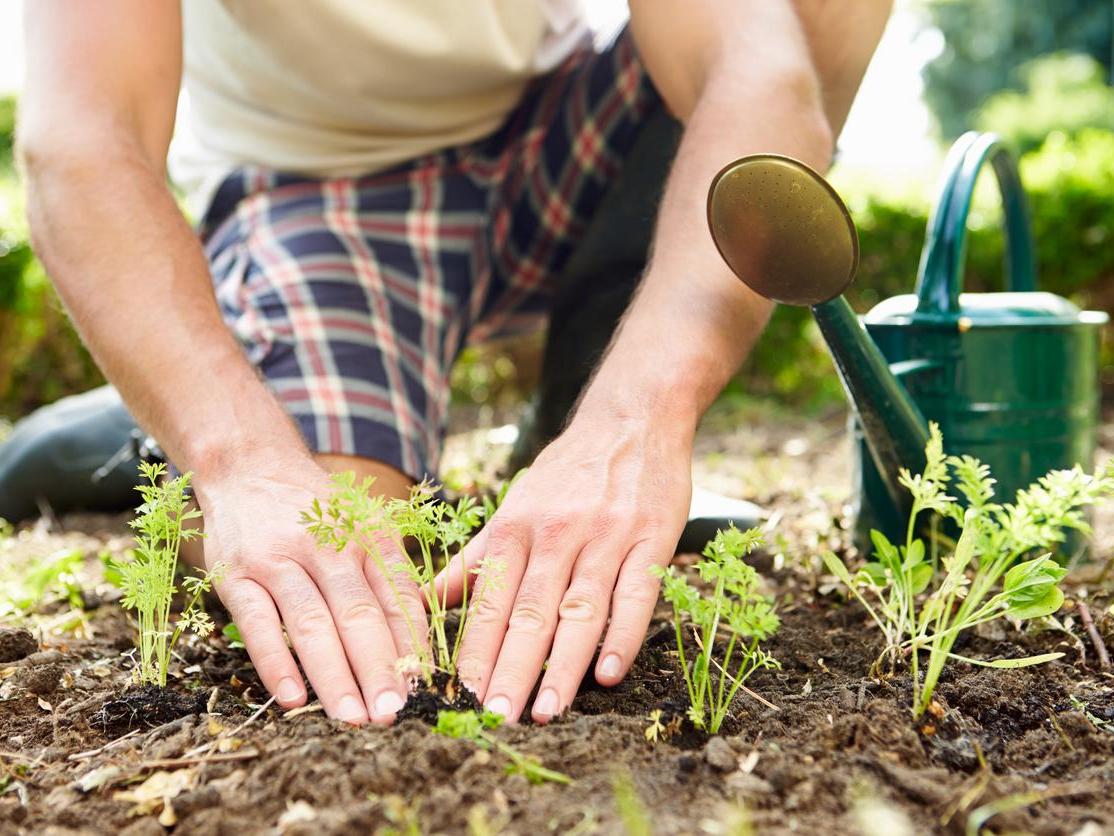ARTICLE AD BOX
Allotments are renowned for their abundant harvests, but their functionality often overshadows their aesthetic appeal.
However, this doesn't have to be the case. Gardening expert, author, and YouTube star Huw Richards, head judge of the Top of the Plots competition, believes ornamental edibles and fragrant herbs can transform an allotment into a productive and beautiful space.
The Top of the Plots competition, a joint initiative by Gardena and the National Allotment Society, celebrates the best of "grow your own" culture. Gardeners can enter by submitting photos and descriptions of their plots.
Here, Richards offers valuable tips for enhancing the beauty of your allotment.

Go vertical
“Use a vertical layer. A lot of allotments are quite traditional, in that they’ll have their rows of potatoes and rows of carrots, and then maybe on one end, they’ll have all of their runner beans, whereas if you created a few pyramid structures throughout your allotment and splitting the vertical layers it creates a warm inviting look and a feeling of ‘What’s around the corner?’
Consider water
“Think about water and reflections. Even finding something like a half an old whiskey barrel, or you could even buy a pre-made little pond and you just fill it with water and plant around it.
“When you’ve got that reflection or slightly glistening water, it creates a calming feel. It’s fantastic for encouraging beneficial insects in your garden to help you with your natural pests and disease control.”
Use curves
Within your specific size of plot, create a curving pathway, almost like nodes. So you’ve got your main path and little nodes like keyholes that you step into and you plant each one up. You can have your herb node, your soft fruit node, your vegetable nodes. So you’ve got like different areas, but, but they’re all in circles or edges rather than straight lines, Richards suggests.
Play with texture
“I like to play with texture with leaves, so for instance fennel has an amazing leaf texture which contrasts with Swiss chard and maybe something like oca, also known as New Zealand yam. I once grew them all in a bed together and let them grow between each other. It’s dancing with the idea of managed wilderness.
“You want to encourage some things to maybe spill over the sides, but you want to make sure that they don’t quite take over. It’s like stealth maintenance.”
Let some of your veg flower
“Break up the green with pops of colour in flowers. If allotmenteers still have a few parsnips and leeks left, leave a few to flower, so you’re treating an edible as an ornamental.
“Parsnips produce a 1.8m high, amazing umbelliferous flower. Leeks produce big allium flowers which are bumble bee magnets. This also contributes to having a more vertical layer within the garden.”
Carrots also produce frothy flowers and you can now buy ornamental carrot varieties in different colours, Richards says.
Make the most of herbs
“I see very few perennial herbs and allotments beyond mint, thyme and rosemary. I’m a massive fan of Korean mint or agastache. You can get flowers in different colours. If you grow it from seed, you will, you will have a really lovely mature plant by mid to late summer that just pumps out flowers until the first frosts.
“It has quite tall flower spikes and you can get it in blues, purples and whites. The good thing about perennials like that is they come really early.”
Consider flowers
“Put the tallest (plant) in the middle, so the design is almost like a cone. Or if you just want some pretty flowers, put a selection of maybe three dahlia varieties in the middle and mix of other flowers such as zinnias, borage and bronze calendula around it.”
Growing cut flowers on allotments is becoming popular, he says.
“I love growing different types of amaranth because of the beautiful flowers and structural texture. Amaranthus ‘Hot Biscuits’ is really cool and different. If you want to go for perennials, peonies are fantastic, and you can’t go wrong with sweet peas.”
Install seating

“To make allotments a nice place you have to have some kind of seating area. A lot of people miss out because they turn the allotment into a chore where there’s one job, which is to grow veg.
“Actually, you have an opportunity to enjoy it beyond the single utility of producing wood. Even if you had two logs and a plank of wood over it and a little coffee table, you want a spot to sit and relax and enjoy it.
“Are you someone that likes reading, or to crochet or to journal? If you got an allotment, create a little space for that and plant around it. You could have a simple arbour with a honeysuckle. The more that you get into your garden, the more healthy, maintained and beautiful it’s going to be.”
How to enter the competition
Gardeners can email topoftheplots@democracypr.com from May 19 with:
1. Six high-quality photos showcasing your garden or allotment2. A short description highlighting your growing journey, plant variety, sustainability practices and maintenance efforts3. Your selected category
The awards categories are: Best Allotment, Best Garden Plot; Best New Plot; Kids on the Plot; Best Small Plot; Biodiversity on the Plot; and Best Community Plot.
The competition has £1,000 of Gardena products and RHS vouchers. The first 100 entrants will also receive Top of the Plots merchandise and a champion’s plaque.
Entries close in August 2025, with finalists announced in early September.









 English (US) ·
English (US) ·